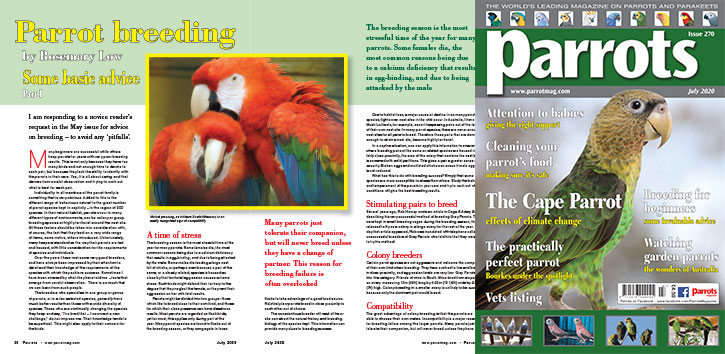
Some basic advice, Part I
I am responding to a novice reader’s request in the May issue for advice on breeding – to avoid any ‘pitfalls’.
Many beginners are successful while others keep parrots for years with very poor breeding results. This is not only because they have too many birds and not enough time to devote to each pair, but because they lack the ability to identify with the parrots in their care. Yes, it is all about caring and that derives from careful observation and trying to work out what is best for each pair.
Individuality in all members of the parrot family is something that is very obvious. Added to this is the different range of behaviours natural to the great number of parrot species kept in captivity – in the region of 200 species. In their natural habitat, parrots occur in many different types of environments, can be colony or group breeding species or highly territorial around the nest site. All these factors should be taken into consideration with, of course, the fact that they feed on a very wide range of items, some native, others introduced. Unfortunately, many keepers standardise the way their parrots are fed and housed, with little consideration for the requirements of species and individuals.








Parrot Chat
Buyers Guides
Breeding articles